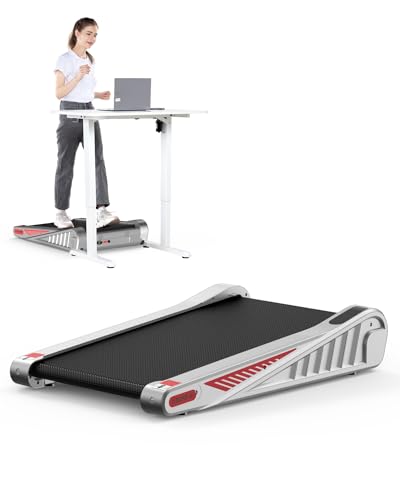The Rise of Manual Walking Machines: A Comprehensive Guide
In an age marked by the increasing need for fitness and health maintenance, manual walking devices have seen a resurgence in popularity. These devices provide an available and economical way to incorporate exercise into one's daily regimen. This post looks into the benefits, features, comparisons, and factors to consider surrounding manual walking makers, changing a commonly neglected piece of physical fitness equipment into a cornerstone of health.
What is a Manual Walking Machine?
A manual walking machine, often called a manual treadmill, is a physical fitness gadget created to replicate walking without reliance on electrical power. Users propel the belt forward through their own movement, making it a distinct mix of cardio and strength exercise. Suitable for users of all fitness levels, this machine has actually gotten traction among those looking for a simple method to exercise.
Secret Features of Manual Walking Machines
| Feature | Description |
|---|---|
| Power Source | Operates without electricity-- perfect for homes without power outlets. |
| Belt System | The belt moves just when the user strolls, offering a distinct workout. |
| Customizable Speed | Users can select their rate, assisting in a tailored workout. |
| Mobility | Generally lighter and easier to save than powered treadmills. |
| Durability | Less moving parts cause lowered maintenance requirements. |
| Affordability | Generally more affordable compared to motorized treadmills. |
Advantages of Using a Manual Walking Machine
- Cost-Efficiency: Manual walking machines tend to be more affordable than their motorized counterparts. This attribute makes them a fantastic investment for those aiming to begin their fitness journey without breaking the bank.
- Efficient Cardio Workout: Because users are accountable for moving the belt, manual devices can provide a more extreme exercise. The more difficult you press, the higher intensity you accomplish.
- Muscle Engagement: Users not only work on their cardiovascular fitness however likewise engage core muscles, resulting in improved stability and strength.
- Low Impact: Unlike working on hard surface areas, a manual walking machine minimizes joint stress, making it appropriate for individuals recovering from injuries or those with joint issues.
- Simplicity and Portability: The absence of complicated settings and the compact design make it simple to incorporate a manual walking machine into any area.
Comparing Manual Walking Machines to Motorized Treadmills
| Requirements | Manual Walking Machines | Motorized Treadmills |
|---|---|---|
| Power Source | Non-electric | Electric (needs power) |
| Speed Control | User-defined | Predefined settings readily available |
| Cost | Usually lower | Generally greater |
| Mobility | More portable | Much heavier, less portable |
| Maintenance | Low maintenance | Routine upkeep might be needed |
| Workout Variety | Limited (walking just) | Wide variety (incline, programs) |
How to Incorporate a Manual Walking Machine into Your Fitness Routine
In order to make the most of the benefits of a manual walking machine, one must strategically prepare their exercise sessions. Here's a simple guide on how to do so.
Step-by-Step Incorporation
- Warm-Up (5-10 minutes): Start with a mild walk at a low rate to prepare your body for an exercise.
Period Training (15-20 minutes):
- Alternate between a brisk walk and a slower speed. For instance, walk at a high strength for 1 minute, followed by 2 minutes of moderate walking. Repeat for 15-20 minutes.
- Steady-State Jogging (10-20 minutes): Once comfortable, include durations of running to increase cardiovascular fitness.
- Cool Down (5-10 minutes): Gradually reduce your speed to bring your heart rate back to a typical level.
- Post-Workout Stretching: Engage in extending workouts to enhance flexibility and avoid discomfort.
Extra Tips for Effective Workouts
- View Your Form: Keep your posture upright and engage your core while walking.
- Usage Resistance Bands: To add more strength-training aspects, connect resistance bands while walking.
- Stay Hydrated: Ensure sufficient water consumption in the past, during, and after exercises to help healing.
FAQs About Manual Walking Machines
1. Are manual walking devices suitable for everybody?
Yes, manual walking machines cater to diverse fitness levels, making them suitable for newbies, intermediates, and even advanced users. However, individuals with severe injuries or health conditions need to consult a doctor before beginning any brand-new workout program.
2. How often should I use a manual walking machine?
For ideal results, go for a minimum of 150 minutes of moderate aerobic activity every week, which can be easily accomplished with routine sessions on a manual walking machine.
3. Can I drop weight utilizing a manual walking machine?
Absolutely! Combined with a well balanced diet, consistent usage of a manual walking machine can add to weight-loss through increased calorie expenditure.
4. What is the difference in between a manual walking machine and an elliptical fitness instructor?
While both devices provide a cardiovascular workout, a manual walking machine focuses mainly on walking. An elliptical can provide both upper and lower body workout with less effect on the joints.
5. Are there content related to using a manual walking machine?
Like any fitness equipment, correct use is critical. Users should preserve their balance and avoid interruptions while walking to avoid accidents.
Manual walking machines offer an exceptional option to standard electric treadmills, fulfilling the diverse needs of fitness enthusiasts worldwide. Their cost, mobility, and efficiency make them a practical option for anybody looking for an easy yet demanding way to preserve physical fitness. By understanding the benefits, differences from motorized treadmills, and how to best incorporate them into exercises, individuals are much better geared up to make an educated choice about their fitness and health journeys.
Whether you're brand-new to physical fitness or searching for an efficient way to remain active, manual walking devices offer a path to a healthier lifestyle. As more individuals seek sustainable fitness services, these devices are poised to stay popular components in homes and health clubs alike.

